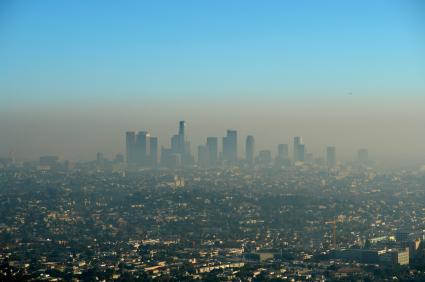UK Government Faces Court For Failing to Act on Air Pollution
by ClickGreen Staff
Published Mon 28 May 2012
Image: This picture was taken in London, the capital city of the United Kingdom. You can clearly see the thick smoke/smoggy air that surrounds Big Ben. This is exactly why the English government is being charged with not following European air pollution limits.
Summary: The United Kingdom Government will be taken to court for failing to uphold air pollution laws set by European Union pollution limits This was brought to the attention of and environmental law group named ClientEarth, whom the High Court dismissed back in December when they brought up this air pollution problem. James Thornton, ClientEarth CEO, explains some of the situation by stating: “The Government is failing to act to tackle Britain’s air pollution crisis – by its own admission the UK won’t meet legal air quality standards until 2025." The reason ClientEarth has brought this to the court's attention is because one, it is against the law, and two, the amount of air pollution related deaths has increased. Not only does air pollution kill simply from inhaling it, but it also causes road accidents. The excess amount of pollution fills the air, which makes the road ahead of a driver less visible. Over 29,000 people have died in the UK because of air pollution, even more if you count the road accident deaths/injuries. The deadline for air pollution plans in the UK was January of 2010, yet current plans will not be carried out until 2020, and none will be carried out until 2025 in London.
Reflection: Normally when we think of air pollution, we think of the United States and our trouble with air pollution. This obviously is not the case, because air pollution is a global problem, especially in England. I can not believe that the beautiful city of London that I visited last summer has such dirty air. It especially upsets me that the English government has gone as far as simply not worrying about the amount of pollution local factories and business release into the air. Though it's horrible to say, it is a bit comforting to know that we aren't the only country having trouble with air quality and pollution. It is very clear that air pollution was put on the back burner by the court handling this case because they dismissed the case for five months. In our world today, it goes to show that the environment is not our first priority, even though this is the only Earth we'll ever have.
Questions
- How do you think the Court should rule? Either in ClientEarth's favor or the UK's government, and why?
- What should the consequences be for the UK for violating the European Union pollution limit?
- Why do you believe air quality and the overall environment has not been global governments first concern? Do you think it will ever be a first concern?
- Do you believe this decision could possibly affect future our government on future environmental laws about air quality? What do you think we would do to improve our air quality and decrease air pollution?
Article url:
http://www.clickgreen.org.uk/news/national-news/123551-uk-government-faces-court-for-failing-to-act-on-air-pollution.html






